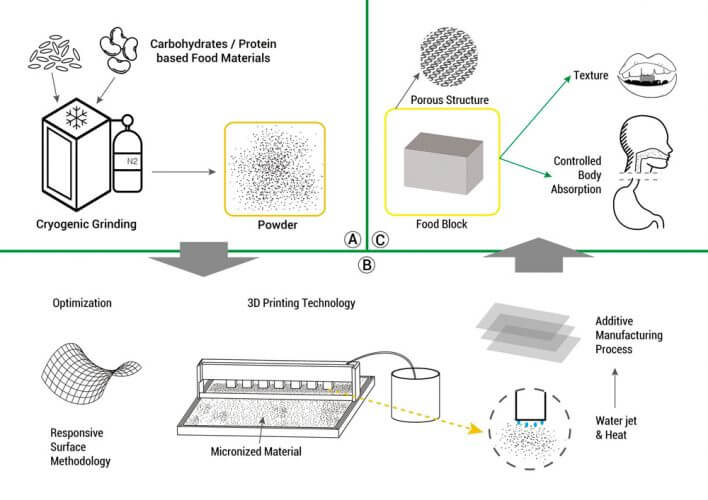
What does it take to cook? Of course, the food! In fact, after a few years the answer may not be so clear. Recently at the conference Experimental Biology 2018, a group of scientists from South Korea has introduced home 3D printer for food that can print food based on personal preferences and peculiarities of the metabolism of each individual.
The researchers assembled the device, which can reproduce physical properties and nanoscale texture of foods, using nutrient powdered ingredients. The powder is made as follows: nutrients (mainly proteins and carbohydrates) with the help of cryogenic grinding of raw materials is pulverized at a temperature of minus 100 degrees Celsius. After that, when exposed to pressure, high temperatures and water content is converted into a porous film.

The process of “cooking” is not much different from the already entered our life in 3D printing. “Printer-cook” puts the nutrients layers, then the top of the “printed” texture of the product. When printing is finished, the product is ready for use or further processing. Scientists hope that their invention will be in demand in the future, as experts predict, by 2050 the world population will increase to 10 billion people. And this way of cooking can save many from starvation, but also reduce the cost of shipping, storage and transportation. According to one of the authors of the invention associate Professor of Ewha Womans University, Jin-Kyu Ri,
“Our development will allow to create food products with essential nutrients at a controlled rate of digestion and composition. With the help of 3D printing meals can be created according to the user’s needs and to be as beneficial to his health.”
South Korea introduced a home printer to print food
Vladimir Kuznetsov